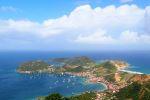

Lake Titicaca
Traditionally regarded as the highest navigable body of water in the world (in reality there are higher lakes in Chile and Peru), Lake Titicaca is immense: its dimensions measure 233km from north-west to south-east and 97km from north-east to south-west. The lake has an indented shoreline, 36 islands and exceptionally clear sapphire-blue water.

San Gimignano
San Gimignano, a stunning medieval hilltop town in Tuscany, Italy, is often called the "Medieval Manhattan" due to its remarkable skyline of ancient towers. Encircled by 13th-century walls, the town is a UNESCO World Heritage site that offers a mesmerizing journey back in time. As you stroll along the cobbled streets of the historic center, you'll be enchanted by the preserved Romanesque and Gothic architecture, from charming piazzas to grand churches.

Bhutan
Bhutan is an ancient, fascinating Himalayas kingdom which sees very few tourists. Visit the main monasteries and fortresses and glimpse a way of life unchanged for centuries.

Israel
Israel is located on the Mediterranean Sea, with Lebanon to the north and Egypt to the South. It is a must-see destination for anyone intrigued with Biblical history. The country is ripe with religious shrines, historical sites and museums.



